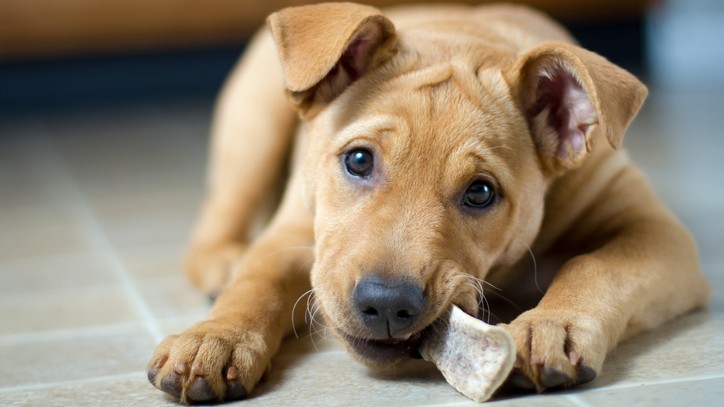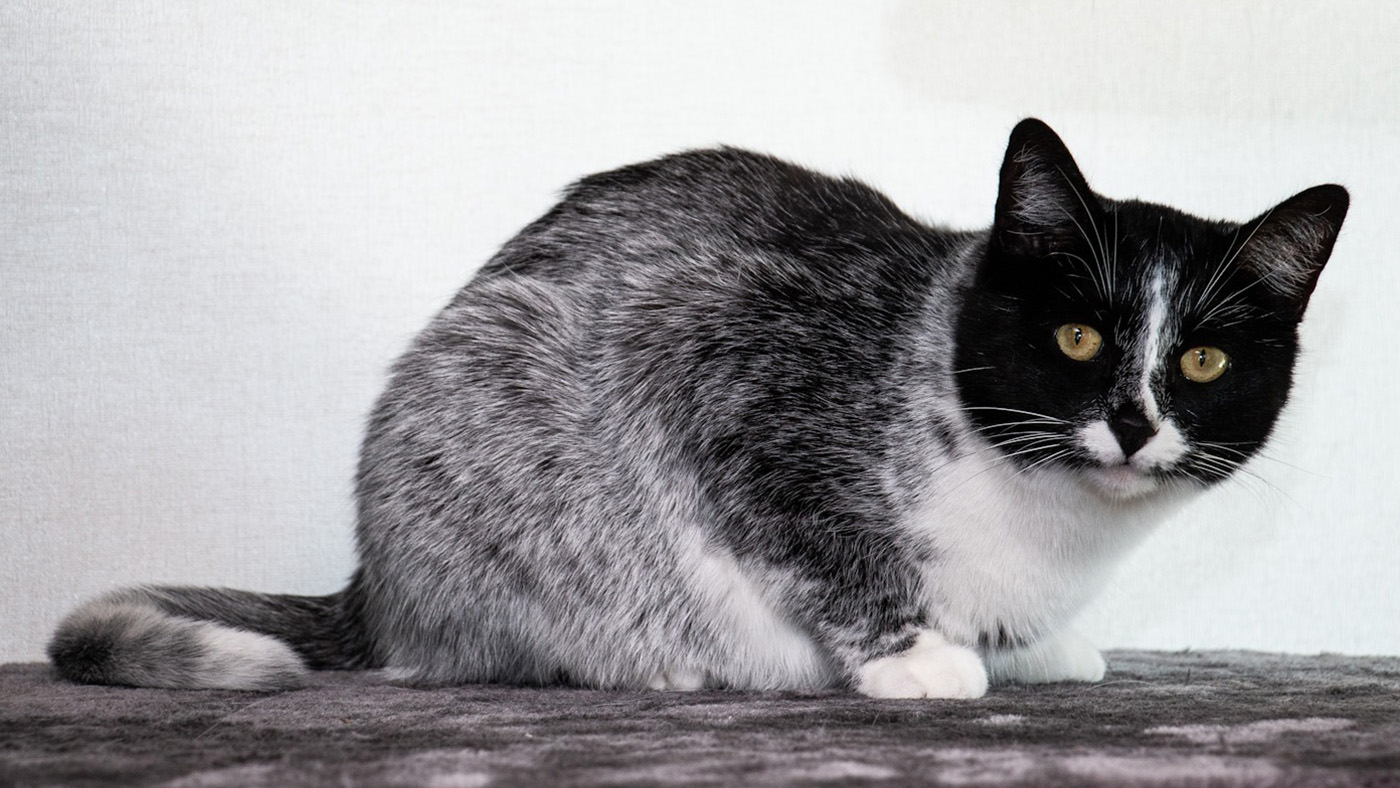How long does puppy teething last? A vet reveals all!
If you're asking the question 'how long does puppy teething last?', you'll find everything you need to know in this guide.

How long does puppy teething last? It’s a question you may well be pondering if you’ve just welcomed an adorable new bundle of fluff into your family and are keen to find out what you can expect over these coming months.
Many pet parents find the puppy teething phase tricky, and for good reason. Not only is it hard to watch your young fur friend experiencing pain and discomfort, it can also feel exasperating to find them chewing on your clothing or furniture to try to help themselves feel better.
Thankfully, the best puppy teething toys are a real lifesaver when it comes to soothing sore gums and offering your little one appropriate items to mouth until their new teeth grow in. And on that note, we have good news for you because while it may seem like a long time when you’re going through it, by around six months of age, your pup will have their adult teeth.
To help you on your puppy teething journey, we spoke to expert vet Dr. Rebecca MacMillan. Below, she explains more about what you can expect, the signs to look out for, and some simple things you can do to help your puppy feel more comfortable.
How long does puppy teething last?

Do dog teeth fall out? They certainly do for puppies. Just like us humans, puppies also have baby teeth that will all eventually fall out to make room for their adult teeth. Exactly how long this takes depends on the breed and their lifestyle. However, Dr. MacMillan shares some rough guidelines that will give you an idea of what to expect:
"Puppies start losing their deciduous (milk) teeth at around 4 months of age," she explains. "This usually begins with the small incisors at the front, before progressing to the larger teeth like the canines and premolars. By around 6 months of age, your puppy will have lost his deciduous teeth and will have all 42 of his new adult teeth."
What are the symptoms of puppy teething
Curious about what signs to be on the lookout for when it comes to puppy teething? While every dog is different, Dr. MacMillan shares a few key things that signal your little fur friend is losing their baby teeth.
"Some owners notice that their puppy is teething because they find loose baby teeth in their home or their puppy’s bed, but this isn’t always the case. Other signs that your puppy is teething include increasing chewing behavior, perhaps with small amounts of blood on your puppy’s toys or in his food bowl," she explains.
"Your puppy may be slower to eat his meals and drooling more than usual. You may also spot that their gums are a little inflamed and that new larger adult teeth are appearing. Some dogs may also be a bit clingy or could be whining more than usual. However, some pups just crack on with things and you wouldn’t notice there was anything wrong at all!"
Chewing is a particularly common behavior amongst teething puppies — and it drives most pet parents mad, especially when the object of their desire is your clothing or furniture! If you're struggling with this at the moment, check out our guide to how to stop a puppy chewing for plenty of helpful tips.
How can I ease my puppy's teething pain?

Anyone who has known a teething baby is aware of how painful this stage can be. That’s why you may notice your puppy starting to chew on things – anything they can fit their small mouths around such as shoes, furniture corners, or even your child’s toys – in an attempt to relieve the pain and discomfort they’re in.
The good news is, there are plenty of simple things you can do to help your young fur friend feel more comfortable.
"Provide them with lots of different chew toys, in a variety of textures," Dr. MacMillan advises. "Some pups will want to bite down on hard rubber whereas others may prefer something softer. You could try chilling or freezing some of your dog’s toys, as this can soothe inflamed gums. You could try wetting a soft, fabric toy down with some water to make them even cooler.
Making sure your home is puppy-proof is key. Puppies that want to chew may have a go at shoes, slippers, and other household items. Consider zoning your pup in a dog-safe area of the house with baby gates and storing all of your valuable possessions out of reach," says Dr. MacMillan. You can check out our guide to how to puppy-proof your house for more on this.
Finally, if your puppy is struggling with their normal food, Dr. MacMillan recommends increasing the amount of wet food you offer or you could soak your dog’s kibbles in water to make them softer. "This should make things easier for them to manage while their mouth is a bit tender."
How do I keep my dog's teeth in good condition?
Before any teething problems begin, it’s important to help your young canine feel comfortable with you touching in and around their mouth.
Training them from a young age will make it much easier in the future to keep your dog’s teeth clean and assess the condition of your dog’s mouth, so it is worth putting the hours in at the very start (just be careful of those sharp baby teeth as they can inflict quite the nip!).
By doing this, you’ll be able to regularly remove plaque from your dog’s teeth to avoid stinky breath and lower the risk of having to put them under anesthetic in order for the vet to clean them instead.
Learning how to brush a dog’s teeth is a simple task that involves the gentle scrubbing of your canine’s teeth with a gauze pad or finger brush. Once comfortable with this stage, you can introduce canine toothpaste and a specialised dog toothbrush.
Do not, under any circumstances, use human toothpaste as it often contains fluoride, a product that can be extremely poisonous to dogs when swallowed.
Virbac CET Enzymatic Toothpaste
Formulated using an exclusive dual-enzyme system, this toothpaste reduces plaque and freshens the breath. Because it contains no foaming agents, it's safe for your pet to swallow and it comes in a choice of five flavors.
For more help during this time, here's how to stop a puppy biting, mouthing or nipping.
PetsRadar Newsletter
Get the best advice, tips and top tech for your beloved Pets
Chloe is a freelance writer, editor, and proofreader, who has more than ten years’ experience in creating animal-focussed content. From National Geographic to Animal Planet, Chloe’s passion for creating fact-filled features all about wildlife and the environment is evident. But it’s not just wild animals that Chloe’s fascinated by. Having written more than 75 articles for PetsRadar - and having her very own four-legged friend by her side - it’s no wonder that her love of dogs (and, of course, cats) has grown exponentially.
Her website, www.chloemaywrites.com, and social media pages - @ChloeMayWrites on Instagram, Facebook, and Twitter - showcase her knowledge through daily facts and trivia tidbits. For example, did you know that snails have teeth?!
- Dr Rebecca MacMillanVet
- Kathryn WilliamsFreelance writer



